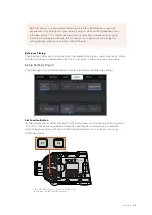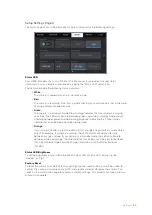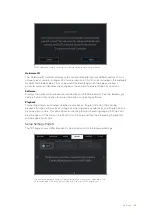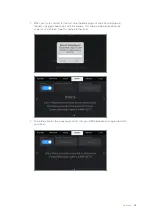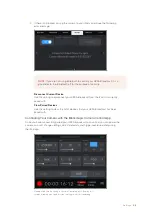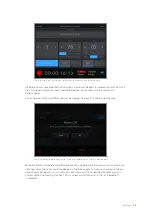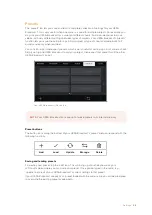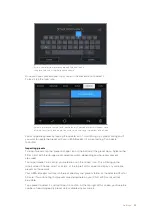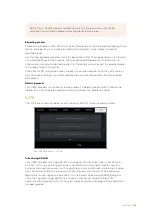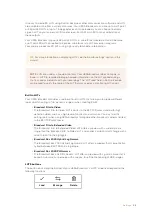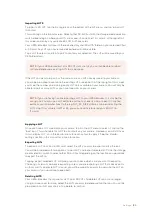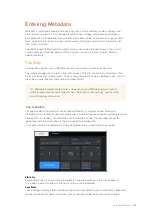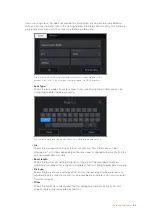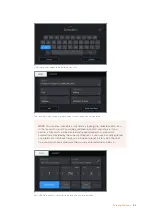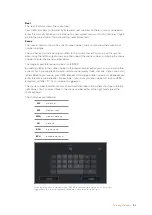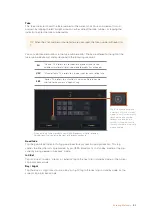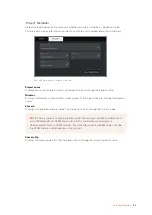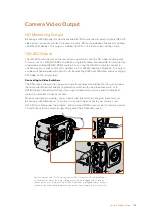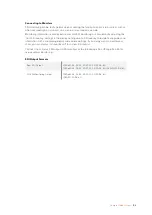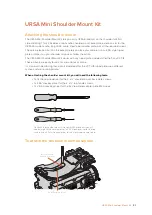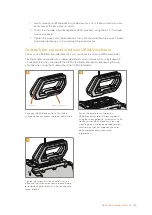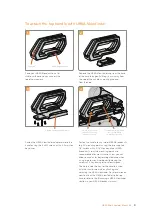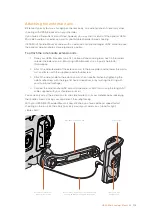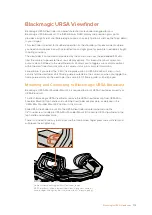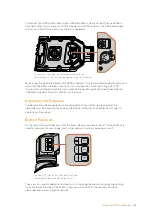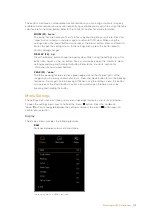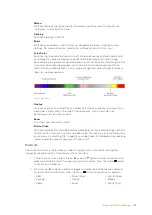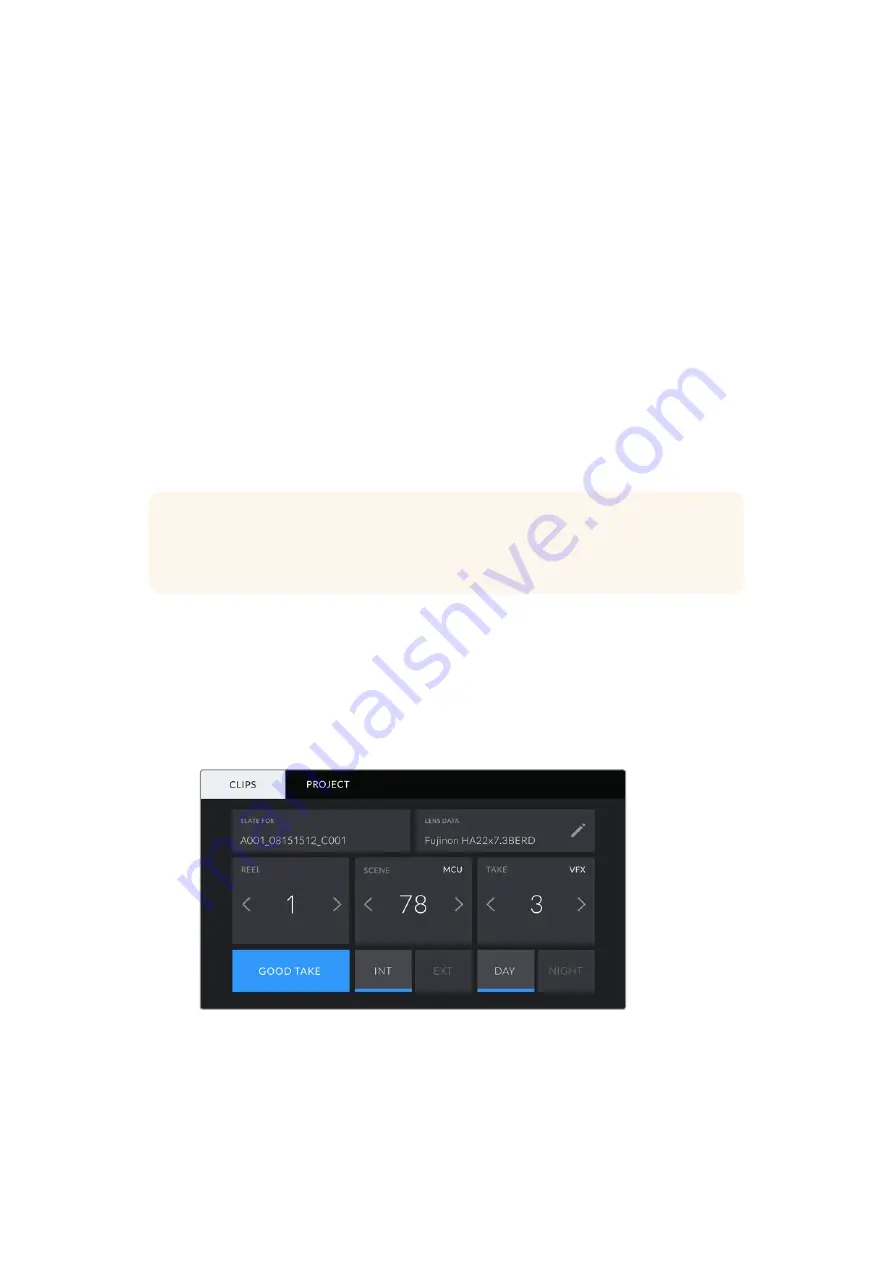
Entering Metadata
Metadata is information saved inside your clip, such as take numbers, camera settings and
other identifying details. This is extremely useful when sorting and processing footage in
post production. For example, take and shot and scene numbers are essential organisational
tools, while lens information can be used to automatically remove distortion or better match
VFX assets to plates.
Your Blackmagic URSA Broadcast automatically saves some metadata to each clip, such as
camera settings, timecode, date and time. You can use your camera’s slate to add many
additional details.
The Slate
Swiping left or right on your URSA Broadcast's touchscreen will bring up the slate.
The slate is divided into two tabs, ‘clips’ and ‘project.’ The ‘clip’ tab contains information that
may vary clip by clip, while ‘project’ is where you enter details common between clips, such as
the project name, director, and camera and operator ID.
‘Clip’ metadata
Changes made to clip metadata work slightly differently in ‘standby’ mode, when your
URSA Broadcast is ready to record, and ‘playback’ mode, when you’re reviewing footage you’ve
already shot. In ‘standby,’ clip metadata will be saved to the next clip recorded, except for
'good take last clip' which refers to the most recently recorded clip.
In 'playback' mode clip metadata is always recorded to the current clip being viewed.
Slate for
This setting shows the clip which the metadata currently displayed in the ‘clip’ applies to.
In ‘standby’ mode, this refers to the next clip that will be recorded.
Lens Data
These settings display information about the current lens fitted to your camera. Many electronic
lenses automatically supply information such as the lens model, aperture and focal length.
TIP
Metadata entered into the slate is viewable on your URSA Broadcast's front or
main SDI outputs when set to ‘director view.’ See the ‘monitor settings’ section in this
manual for more information.
101
Entering Metadata


